1. The Atomic Energy Lab (Gilbert, 1950s)
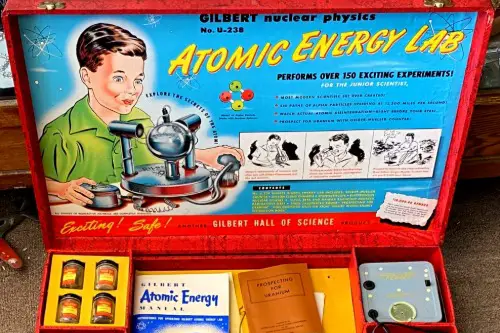
In the 1950s, A.C. Gilbert Company introduced the “Atomic Energy Lab,” a toy that allowed kids to experiment with real radioactive materials. It came with items like a Geiger counter, uranium ore, and a cloud chamber, which kids could use to observe the effects of radiation and learn about atomic energy. The toy was designed to introduce young minds to the fascinating world of nuclear science, which was a hot topic in post-World War II America. However, the inclusion of actual uranium ore in a children’s toy was beyond reckless by modern standards. While the radiation levels in the uranium ore were low, it was still a hazardous material that could cause long-term health effects if mishandled. The set gave children the tools to work with a Geiger counter, watch for radioactivity, and perform experiments that were designed to teach them about nuclear energy.
The problem, of course, is that exposing children to radioactive materials was irresponsible, even with the low levels of radiation involved. Many years later, the toy was discontinued, and it’s easy to see why. Today, the idea of selling radioactive materials to children would be absolutely unthinkable, and such a product would face an immediate ban due to its potential risks. A search for “Gilbert Atomic Energy Lab” reveals the toy’s colorful packaging and photos of the kits that kids once eagerly opened to dive into the world of science. These days, the legacy of this toy serves as a cautionary tale about the dangers of disregarding safety in the name of education.
2. Creepy Crawlers (The Original Set, 1960s)
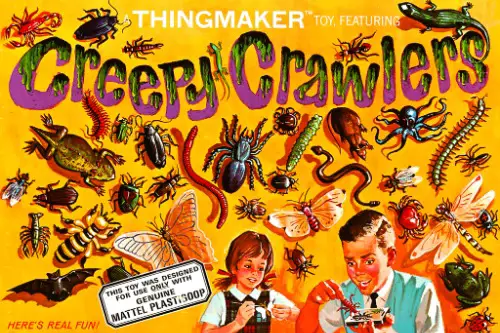
The “Creepy Crawlers” set, which first appeared in the 1960s, allowed kids to create their own rubber bugs, worms, and other creepy creatures by heating up special liquid plastic in a hot metal mold. The set included a heating plate that got extremely hot, and many children ended up burned while using it. The molds themselves were made of metal, and kids had to be extremely careful not to touch the hot surface, which was a challenge for young hands.
While the idea of making your own creepy creatures might sound fun to children, the risks associated with using such a hot device were significant. There was a high risk of burns from touching the metal molds, and the hot plate could cause serious injury if not used properly. If you search for “Creepy Crawlers 1960s toy” online, you’ll find images of the toy’s original packaging, showing a colorful kit full of molds and liquid plastic. Today, there’s no way this toy would be sold without major safety redesigns. The hotplate would be an obvious liability, and the toy would be subject to heavy regulation to ensure that it couldn’t harm children. The modern versions of Creepy Crawlers have been redesigned to remove the dangerous heating element, but the original version remains a warning about the dangers of overly ambitious toys that don’t prioritize safety.
3. The Easy-Bake Oven (1960s)
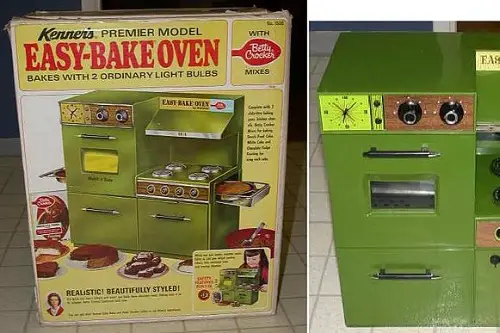
While the Easy-Bake Oven is beloved today as a nostalgic toy, the original version from the 1960s would never pass modern safety standards. The early Easy-Bake Oven came with an actual light bulb as its heat source—yes, a small, incandescent bulb that kids were instructed to bake cakes with. This small, 100-watt light bulb would heat up the oven to around 350°F, enough to bake a cake or cookies. While it sounds harmless now, there were serious risks associated with this early version of the toy.
The oven was often made from thin, easily heated metal, which meant that kids could burn themselves just by touching the outside of the toy, not to mention the risk of touching the hot light bulb. There were reports of burns and injuries as children mishandled the toy or accidentally left their hands on the exposed metal parts. The baking process also wasn’t particularly safe, as there were no protective features to prevent young children from touching the hot parts or potentially causing a fire hazard. A search for “original Easy-Bake Oven 1960s” will show the early designs, which were simple but had safety concerns that would never be allowed in today’s toy market. Modern Easy-Bake Ovens use a safe, insulated heating element that doesn’t get as dangerously hot, and they’re designed with much better safeguards to ensure that kids can bake safely. The original toy, with its light bulb, would definitely be banned today due to its burn risk.
4. Lawn Darts (Jarts, 1970s-1980s)
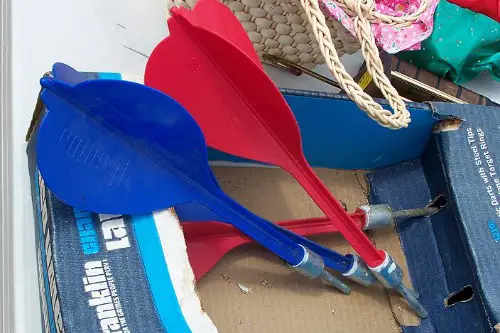
Lawn darts, also known as “Jarts,” were once a staple of family picnics and backyard barbecues in the 1970s and 1980s. These oversized darts were equipped with heavy metal tips and designed to be thrown at a target, like a giant game of horseshoes. The problem? The sharp metal tips posed a serious injury risk, especially if someone was struck by one. Despite their fun reputation, these darts could easily impale a person, particularly if the dart hit them in the head or neck.
In 1988, after numerous reports of injuries (some of them fatal), the U.S. Consumer Product Safety Commission banned Jarts from the market. The heavy metal tips and sharp points made them an obvious hazard. Searching for “Jarts lawn darts” online will bring up vintage advertisements showing smiling kids tossing the darts through the air—completely unaware of how dangerous they were. The toy would never be approved today, as it doesn’t meet modern safety standards for children’s toys. It’s easy to see why these lawn darts were eventually banned: they were simply too dangerous to be sold to the general public, especially when there were far safer alternatives for outdoor fun.
5. Skip-It (Tiger Electronics, 1990s)
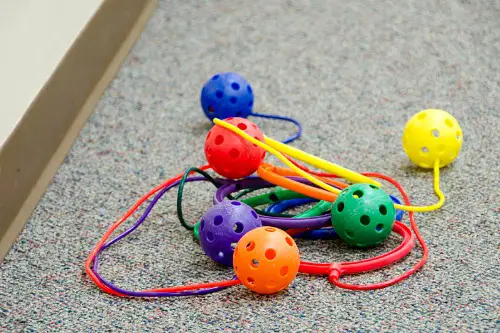
The Skip-It was a popular toy in the 1990s that involved strapping a plastic hoop around one’s ankle and then “skipping” it around while hopping on the other foot. It was marketed as a fun way to get kids moving and stay active. While the concept of skipping was fun, the toy’s design was flawed. The Skip-It had a spinning mechanism that could snap back and strike the user’s leg if they weren’t careful, causing bruises and cuts. In some cases, the toy even had sharp edges that made it more dangerous.
Despite its widespread popularity, the Skip-It was not as safe as it seemed. Kids would sometimes lose control of the toy, leading to injuries. Some models were known to cause painful cuts from the hard plastic, particularly around the edges of the spinning wheel. If you search for “1990s Skip-It toy” online, you’ll find images of the brightly colored, neon toy in action, but you’ll also come across stories of kids getting hurt while using it. In today’s safety-conscious world, the Skip-It would likely be pulled from the market due to concerns over the risks it posed, particularly to younger children who may not have the coordination to handle the toy properly. With today’s more rigorous safety standards, a toy like this would likely face serious redesigns—or outright bans.
6. Lead-Paint Toy Soldiers (Pre-1970s)
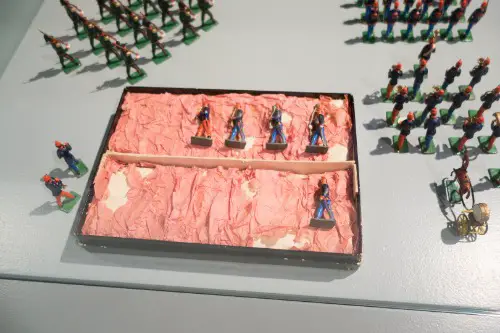
Before the U.S. government implemented strict regulations, many toys—particularly toy soldiers—were painted with lead-based paints. These vibrant paints were cheap and offered a bright finish, but lead is highly toxic, and prolonged exposure can lead to serious health issues, especially in children. Lead poisoning could result from children putting the toys in their mouths or simply from prolonged handling of these lead-painted figures.
The dangers of lead-paint toys were not fully understood until the mid-20th century, but after the toxicity became widely recognized, regulations were passed to ban the use of lead paint in toys. If you search for “lead paint toy soldiers” online, you’ll find images of these small, colorful figures, many of which were crafted with cheap materials and painted with toxic substances. Today, a toy painted with lead would be pulled off the market immediately, and any company that sold such items would face serious consequences. While these toy soldiers may seem harmless now, they represent a bygone era where safety was an afterthought in many children’s products.
7. The Electric Football Game (1960s-1970s)
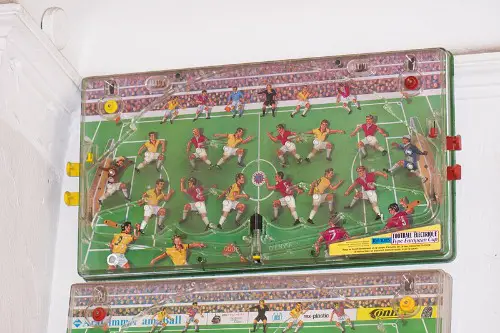
The “Electric Football Game” was an iconic toy that allowed players to control tiny plastic football players on a vibrating metal field. The concept was simple: you would place your football figures on a metal board, turn on a motor, and the figures would vibrate across the field in unpredictable directions. However, the vibrations were not only erratic but could cause the figures to move in all sorts of strange and often frustrating ways, which made the game less about strategy and more about luck.
The real problem with this toy, however, was its electrical components. The motor and wiring were often exposed, creating the risk of electrical shocks if the wires were damaged or tampered with. If you search for “Electric Football Game 1960s” online, you’ll find pictures of the wobbly football players in action, but you’ll also see a history of frustration with this toy’s unpredictability and the safety concerns it raised. The combination of electrical hazards and the randomness of the game made it a toy that would be almost impossible to sell today. In today’s world, there’s no way that a product with exposed wiring and electrical risks would make it through safety testing.
8. The Water Wiggle (1960s)

The Water Wiggle was a backyard toy designed to spray water while it “wiggled” around in the yard. It was a simple concept: a plastic hose attached to a sprinkler that could twist and turn as it sprayed water in all directions. The idea was that kids could run around and play while the Water Wiggle did its thing, but the toy’s unpredictable movement made it more dangerous than fun. The Water Wiggle would often whip around erratically, spraying water in unexpected directions. The risk here wasn’t just wet clothes—it was the potential for the toy to strike kids in the face or body, especially if they were close to it when it started spinning.
If you look for “Water Wiggle toy 1960s” online, you’ll see vintage commercials that show kids running through the spraying water, laughing, and playing. While it seems harmless at first glance, the erratic nature of the toy made it a hazard. Today, the Water Wiggle would be banned due to its unpredictable and dangerous nature, especially with today’s focus on making outdoor toys safe and fun for all ages.
9. The Baby’s First Barbie (1960s)
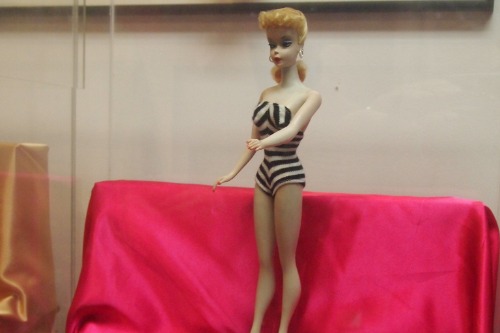
Barbie, the iconic doll, has long been associated with fun and fashion, but one of her early iterations—”Baby’s First Barbie”—was pretty controversial. Released in the early 1960s, this toy was marketed as a soft, squeezable baby doll meant for infants, complete with a string on the back that, when pulled, would make a “crying” sound. However, the soft, vinyl body of this toy wasn’t the issue—it was the doll’s design that raised concerns. The small, plastic facial features, particularly the tiny nose and mouth, presented a choking hazard for infants and toddlers. In fact, there were reports of babies getting the pieces lodged in their throats, leading to a few dangerous situations.
The idea of marketing a doll designed for such a young age group with parts that could potentially detach and be swallowed just didn’t sit well once safety regulations began to take shape. Searching for “Baby’s First Barbie 1960s” online will show a few vintage ads where the doll looks sweet and innocent, but the design flaw was quickly realized and led to the toy being recalled. This toy would certainly be banned today due to modern safety standards, particularly the choking hazard it posed to babies.
10. The Spinning Top With a String (1890s-1920s)
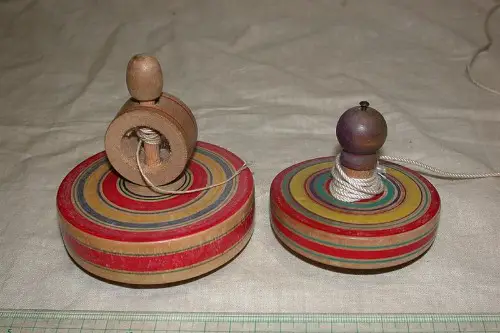
This toy might seem harmless, but in the late 19th and early 20th centuries, a particular type of spinning top with an attached string became a common and dangerous item. The toy, which involved winding a string around a spinning top and then letting it loose to spin at high speed, was sold in mass quantities. However, the string that came with these tops was often quite thin and could cause strangulation hazards if a child got it wrapped around their neck. Children would sometimes play with the string in such a way that it could be easily tangled, leading to the top spinning out of control or even the string breaking and causing a sharp snap that could injure the child.
While these spinning tops seemed like innocent fun, the risks involved—especially with the use of thin, easily breakable string—meant the toy fell out of favor as safety standards evolved. A quick search for “spinning top with string toy 1900s” will reveal images of the brightly colored tops and their winding mechanisms. These tops were commonly sold in toy stores, but by today’s standards, a toy like this with such a dangerous potential would not be approved. Modern toys with string attachments, like jump ropes, have built-in safeguards to prevent strangulation, making sure that children’s safety is prioritized.
11. The Toy Crossbow (1960s-1970s)
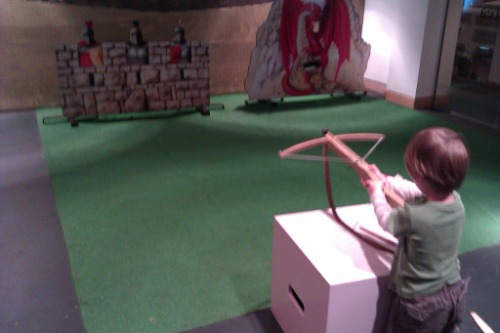
In the 1960s and 1970s, a toy crossbow made for kids gained popularity as a fun, adventurous outdoor toy. Designed to look like a miniature version of a real crossbow, it featured a trigger mechanism and came with small plastic “arrows” that were shot at targets. While it may seem innocent enough, the toy was actually extremely dangerous. The arrows were often made of hard plastic and had sharp tips, making them capable of causing serious injuries. Children were encouraged to aim the crossbow at their friends or targets, but this encouraged reckless behavior, as the toy was difficult to aim accurately, increasing the chances of hitting someone in the face or eyes.
There were multiple reports of kids suffering eye injuries, cuts, and even puncture wounds from the plastic projectiles. Searching for “toy crossbow 1960s” online reveals vintage ads and images of children happily aiming their miniature crossbows, but in hindsight, this toy would have been an obvious safety hazard. Today, toy crossbows with sharp projectiles would be immediately banned due to their risk of injury, particularly to the eyes and face. This toy would never meet modern safety standards, and its marketing would be subject to heavy scrutiny. While it was sold as a harmless, fun way for kids to engage in pretend play, it ultimately had the potential to cause lasting harm.
12. The Glass Marble Sets (Pre-1970s)
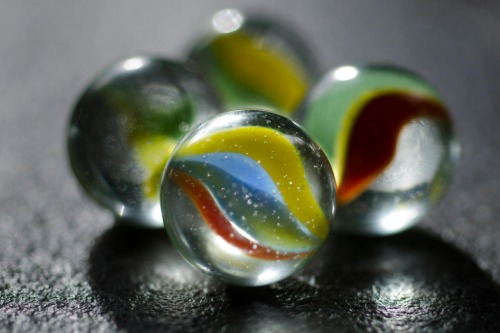
Glass marbles have been around for centuries, but many of the sets made in the early to mid-20th century were dangerous in ways that modern toys would never be allowed to replicate. In particular, some of these marble sets came in glass containers that were not child-safe. Kids would often play with marbles indoors, rolling them on hard surfaces where they could easily shatter. The sharp edges from broken glass could cause cuts or even eye injuries. In addition, the small size of the marbles posed a choking hazard for younger children, especially since they were often sold in large quantities in non-secure containers.
The sets did not include the modern safety features that restrict small parts for kids under certain ages. A quick look online for “old glass marble sets” will show how marbles were marketed as both a game and collectible item, but the lack of safety warnings about the potential hazards led to increased awareness of their dangers. Today, such sets would likely be banned or at least severely regulated, with toy manufacturers offering safer, non-glass alternatives and more stringent packaging guidelines to prevent injuries.
13. The Green Army Men (Pre-1970s)
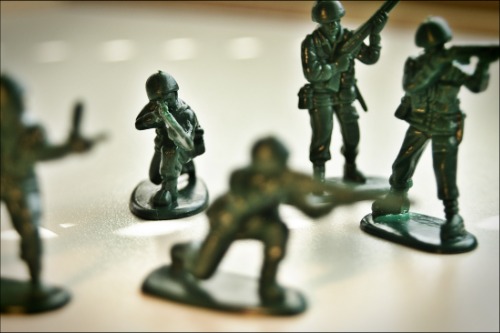
The iconic plastic “Green Army Men” have been part of American childhoods for generations, but many early versions of these figures had serious safety concerns. Manufactured in the 1940s through the 1960s, the toys were often made of brittle plastic, meaning that when they broke (and they did, often), the sharp edges could easily cause cuts. Many versions also had small, detachable parts, such as rifles, helmets, and backpacks, which posed choking hazards for younger children.
While the concept of the toys—small, heroic soldiers—was undoubtedly a beloved part of childhood play, the design flaws were a different story. Even the paint used on these soldiers was often made from lead-based materials, which made the toys a potential health risk if the paint chipped and children ingested it. A quick search for “vintage Green Army Men 1940s” will show the classic look of the green soldiers and their accompanying accessories, which seem innocuous, but the danger they posed is clear in retrospect. Today, these toys would be heavily regulated, with strict guidelines for the materials used, as well as new safety measures to ensure they’re free from lead-based paints and that small parts are securely fastened to prevent choking hazards.


